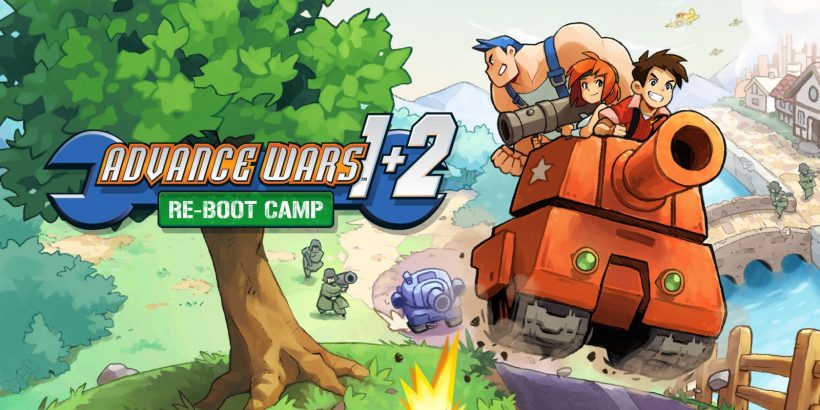I have spent countless hours with Advance Wars over the years, Game Boy Advance gripped in my hands, plotting my next military move. The first in the series in particular has consistently been my most essential game cartridge, my always-reliable gaming companion, rich in endless hours of tactical plotting. It’s my desert island game of choice, my favourite game of all-time. And so the news that Advance Wars was coming to Switch was quite the roller-coaster for me. There was the initial euphoria that the series would finally be getting the new wave of fans that it deserved, followed by a kind of… well, horror when I first saw the preview screenshots. What have they done to my Advance Wars?! Where are the cute pixelated troops that I’d taken into countless battles before?! Why are they sporting a shiny new cartoon look?
Nintendo chose not to go for a straight port — which, effectively could have been both games simply appearing in their original form on NSO — but rather to reinvigorate (or Re-Boot) the series with a modern twist. Thankfully however, after an hour or so of play with Advance Wars 1+2: Re-Boot Camp I bravely adjusted to the graphical overhaul, and it soon felt like home. I was pleased — relieved, actually — to discover that the gameplay remains intact. The fundamentals haven’t been tinkered with; and why would they? The individual unit types were so perfectly structured on the GBA, complementing each other like chess pieces, that there was little need to change them.
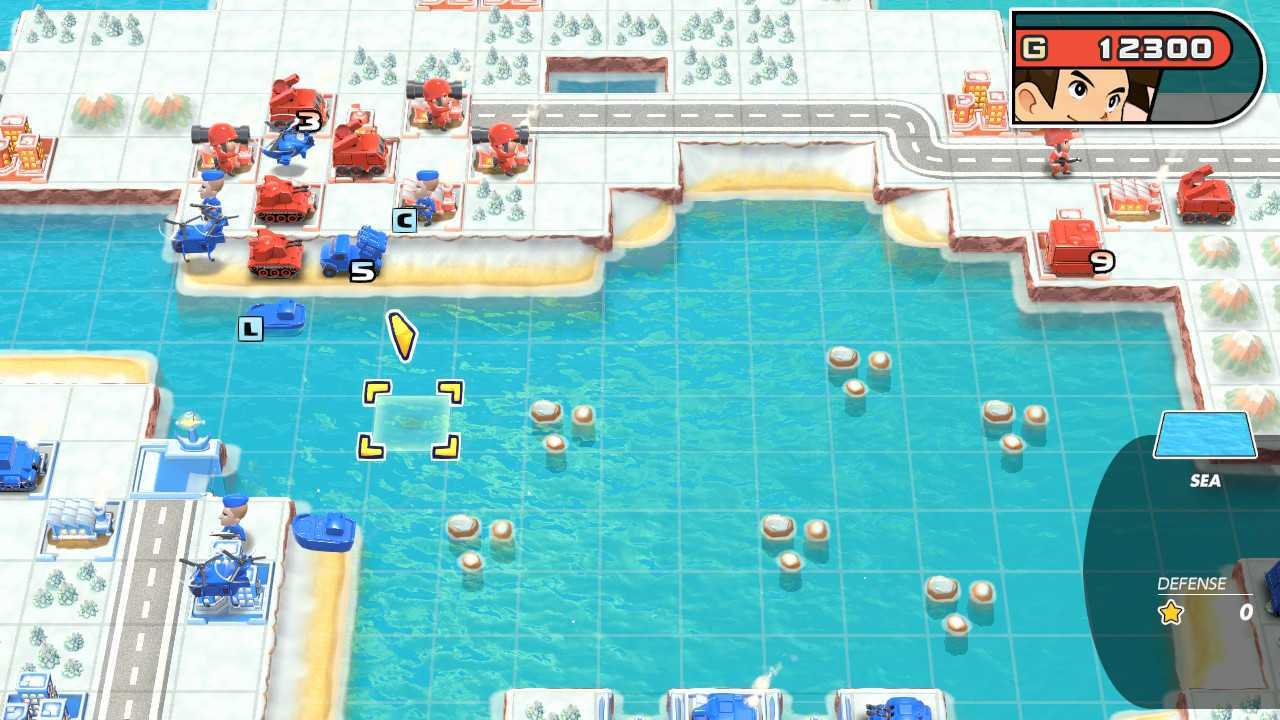
Let’s give credit to Nintendo for giving us two classics in one generous package. Both games share very similar DNA, serving up a wealth of turn-based strategy gaming to exercise the grey matter; it makes sense to throw them together. The original Advance Wars was released in 2001 to great critical acclaim, with the sequel — Black Hole Rising — following two years later. The latter added a few new features, but essentially used the same structure as its predecessor: a story campaign featuring a gradually escalating challenge, a selection of additional challenge maps to test your prowess, and a map designer.
At the beginning of the campaigns, the scale of the playfield is small, with a simple tutorial teaching the basics of deployment. You’ll start with control of Andy, the Commanding Officer (or CO) of the Orange Star army. Further into the campaign, other armies will come under your control, providing a steady flow of new gameplay dynamics to explore. Your own army and that of your opposition have the same unit types available, albeit with slight visual tweaks. At the lowest level (and the cheapest to produce once you have factories up and running) are the infantry units, who may lack firepower but can put the footwork in to claim new territory. Each map has a selection of neutral cities to be conquered; in doing so you’ll gain a location in which damaged units can recover lost hit points. Cities also add funds to your pocket, needed to construct and deploy new units from your factories. The more locations you own, the bigger your army will become, and it’s the foot soldiers that set these wheels in motion. Primarily, there are two win states to each mission: defeat all the enemy troops, or conquer their headquarters. Again, the latter can only be achieved by your infantry.
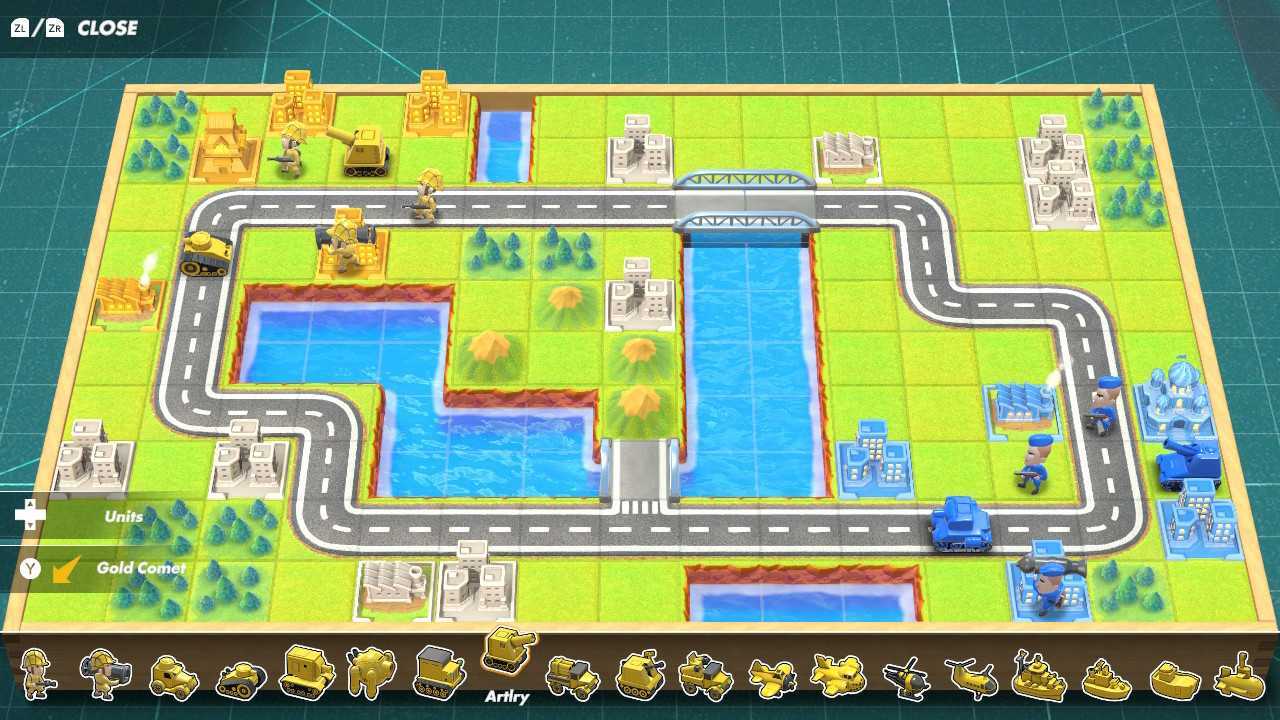
But they’ll need protection. On the ground, this means tanks, mobile artillery, rocket launchers and missiles, each with escalating production costs but an inflated amount of firepower to match. Tanks can move and fire on the same turn, while some long-range weapons can only execute one action each turn, meaning careful planning is required to get them settled in a position that will give you wide defensive coverage. When air and sea units are added to the mix, you’ll be fighting on three fronts, and each unit has various stats that need to be considered when you’re strategizing their next move: their movement speed, range of fire, even the type of opposition units they can and can’t battle against. Your vehicles can run low on gas too; leaving them stalled on land or sunk to the bottom of the ocean (worse things happen at sea, remember). Thankfully there are specialist units that can refuel those in need while also carrying troops over a greater distance, though on the flipside these transporter vehicles have no weapons to defend themselves.
Your geographical position on the map is also a factor in the battle’s progress, although it’s all obvious stuff. Positioning your infantry on a hill will give you a tactical advantage in the levels that feature fog of war, allowing your army to get a better view of approaching threats. Placing a unit in a forest meanwhile will provide additional fire cover compared to remaining on an open road. At sea too, there are considerations: a reef will offer more shelter than open water, and a beach is the only location at which land-based units can climb aboard a lander boat for transportation across the water. It’s this combination of keeping in mind your individual units and how best to use the terrain around you that is crucial to success. It’s classic strategy content of course, and these design tropes have been used in countless other tactical games since, but Advance Wars was credited upon its original release for its efficient structure, and these game mechanics remain solid alongside other excellent turn-based strategy games that we’ve experienced since. Advance Wars certainly doesn’t feel dated, and the campaigns offer a rewarding challenge, as your army fights their way to success. And if your plans fail, restart the mission: The temptation is strong to try again, fine tuning your tactics to attempt a different approach. The sense of achievement when you win against the odds is immense.
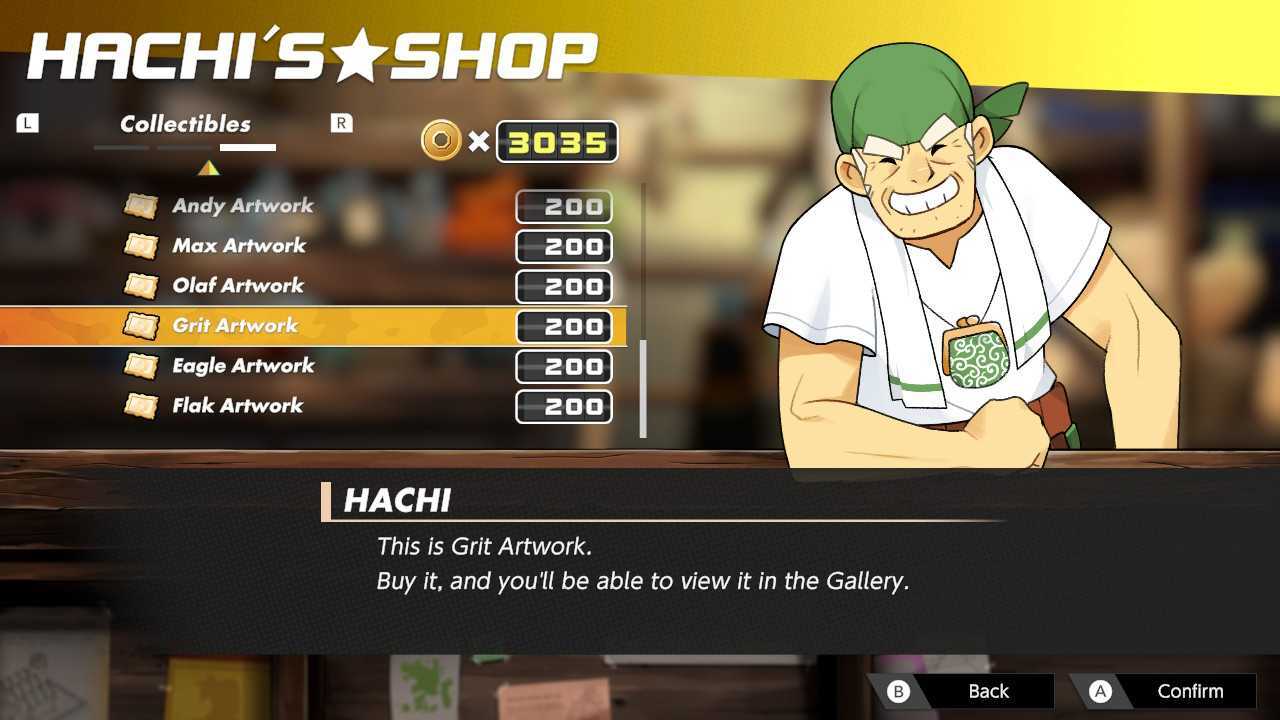
Besides the Campaign, there’s a generous selection of other game modes to explore too, the most significant being the new online play mode, in which you can challenge any of your friends (provided they have their own copy of the game) to battle. For local play, Versus mode allows up to four players to head into battle on one console, or up to four players on four consoles, replicating the multiplayer functionality of Advance Wars on GBA (but without the cabling!). There’s also the War Room, which offers a broader challenge than the Campaign: each map is served up devoid of any units, meaning that you’ll need to draw from past experience to aid you in deciding what to build first in your factories. New maps for the War Room are available from Hachi’s shop (See box-out “What’re ya buyin?”), and they’re ideal for trying out different tactics and honing your skills.
Advance Wars 2 retains the formula of the first game, but with a tougher challenge and additional CO Powers, battle units, and terrain elements. These include volcanoes that can erupt and damage troops in their vicinity, and a network of near indestructible pipes that I remember being quite a frustrating addition when I originally played the game on Game Boy Advance, and I find to be just as odd an inclusion now. There’s a purity to the original that I feel is a little diluted in the sequel game. Wars 2 automatically unlocks upon completion of the first game’s campaign, although the option is available to unlock it sooner if preferred. Doing so may ruin the story for anyone who is heavily invested in it, although it should be noted that the plot itself isn’t particularly nuanced, and the dialogue offered up by these characters certainly can’t compete with something more weighty such as Triangle Strategy. The ‘quips’ and one-liners that these characters hurl at each other are easily the weakest portion of their artillery, but thankfully there is the possibility of skipping the conversational moments.
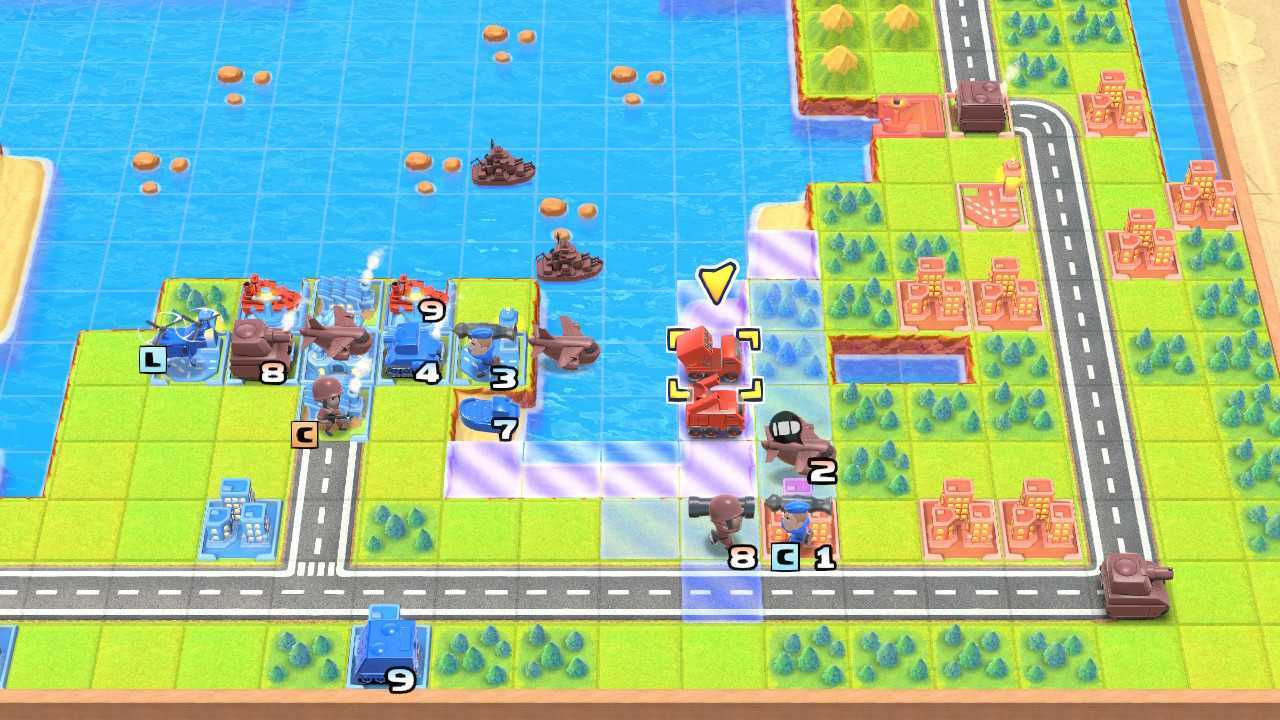
While the plot can be considered entirely optional to invest yourself in, there’s another aspect of the game that I soon removed from play: the combat animations. Not that they are offensive (no pun intended); the battle visuals that depict the execution of your tactical decisions are crisp and cartoonish, and quite an upgrade on the 16-bit graphics of the GBA. But in war, there’s no time for such frivolities. Once I’d planned the actions for each of my units, I wanted to see the results of my decision making. Advance Wars puts me in a Zen state of mind, completely immersed in battle, moving my pieces, watching the drama unfold. The animations are surplus to requirements, unnecessarily delaying my charge for victory.
The soundtrack for both games are richly varied, with themes that offer a diverse mix of memorable music, befitting the demeanour of each Commanding Officer. I’m pleased to report that the original sound effects are still intact for this remake. They each perfectly encapsulate their function, whether it be the movement and fire of the units themselves, or the UI responses with each button press you make. It reminds me of playing a Mario platformer; those specific tones which we have heard on numerous games over the decades, that just sound right. It’s the same here; each audio cue in Advance Wars totally suits the on-screen events.
Despite my initial reservations over the reskin, Wayforward’s refresh of Advance Wars 1 and 2 retains the charm of the Game Boy releases while adding new visuals that, while not better than the originals, may help to broaden the games’ appeal with its pristine appearance. Other than the opportunity for online play, the original GBA versions are likely to remain my preference. Is the original Advance Wars still my favourite game of all-time? Absolutely, and this duo of titles provide a hugely addictive and rewarding package that fits the Switch like a glove.
Advance Wars 1+2: Re-Boot Camp Review £49.99
Summary
Advance Wars finally gets a deserved appearance on Switch! This package is ideal for both newcomers to turn-based strategy and experienced players. There are endless hours of brain-stimulating entertainment here, with army units as perfectly pitched as chess pieces.

